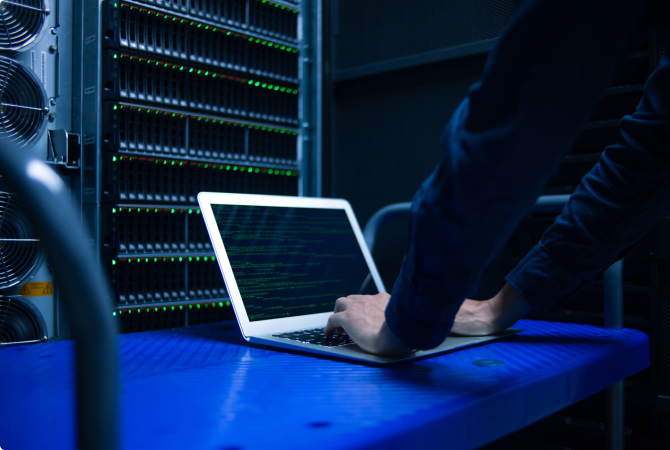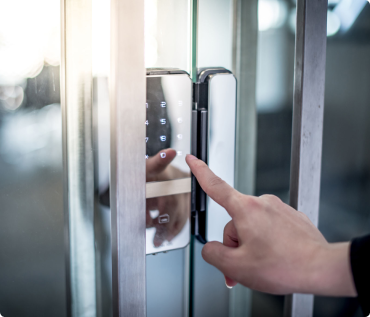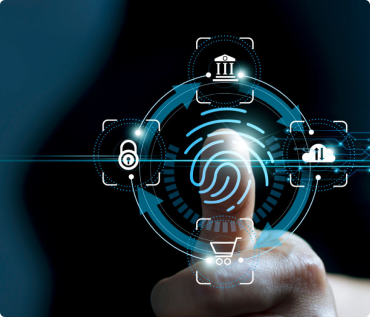Many measures are in place in data centers to secure hardware assets and protect against cyber threats. These safeguards are required to avoid data center disruptions.
However, intrusions and cyber-attacks aren't the sole sources of disruption. Extreme temperatures, for example, can cause uninterruptible power supply (UPS) problems.
The hardware and equipment are the infrastructures that allow data to be routed from one user to another. It is critical to monitor all environmental variables for each piece of equipment to keep your data centers working smoothly and avoid unexpected outages. If something goes wrong, the technical team can take rapid preventive actions. The proper use of environmental monitoring sensors is critical to this ability.
This article will take a closer look at data center environmental monitoring and assessment, including what it is, why it is important, and the tools you can use to monitor every component of your data center.
What Exactly Does Environmental Monitoring in a Data Center Mean?
The process of monitoring environmental conditions such as temperature, humidity, and water in a data center is known as environmental monitoring. It enables data center operators to become aware of any environmental hazards within the facility and take proactive measures to reduce their impact.
Monitoring environmental conditions entail installing sensors across a facility and transferring data to DCIM software (Data Center Infrastructure Management). When a sensor detects that a threshold has been reached, data center operators might receive notifications.
Take into account uninterruptible power supplies (UPS). These units are intended to supply emergency power to important hardware in the case of a power outage or voltage drop. Most UPS systems include many fans to prevent overheating. However, if these fans fail, a UPS system can overheat and malfunction. A single fan failure is unlikely to bring a UPS down. Multiple fans failing at the same time, on the other hand, can lead these units to fail.
Monitoring environmental conditions enable data center operators to detect minute changes within a facility and take corrective action before any systems fail.
Importance of Data Center environmental monitoring and assessment
Many pieces of hardware and technology make up the moving elements required to protect important information in a data center. It is critical to confirm that a colocation facility is committed to tracking all environmental factors for each piece of equipment when outsourcing. This keeps the facility's technical team informed of issues that require corrective action and allows them to take preventative actions to avoid similar problems in the future. The proper use of these environmental monitoring technologies will allow the data center provider to determine which systems are using which resources, allowing the facility to be positioned for optimal use.
Temperature
Temperature control within the data center is critical for avoiding equipment overheating, regulating equipment cooling, and measuring overall efficiency.
A maximum intake temperature shall not be exceeded by any server or server rack. Many administrators search for information like rack airflow exhaust, internal system temperatures, and even CPU temperatures. The more information offered by temperature control devices, the faster an engineer can nip concerns in the bud before they become major difficulties.
It is not sufficient to rely solely on the temperature conditions at room temperature in a data center. When there is a heating problem, the air conditioning system will try to fix it, but this will only be obvious when the system is unable to compensate, which may be too late for the rack. Multiple temperature sensors situated on the top, middle, and bottom of racks, as well as at air conditioning intake and discharge vents, are commonly used to evaluate heat generation and output, as well as cooling efficiency.
Temperature control is important as an environmental monitoring device in the study and optimization of the colocation facility's heating and cooling system. Temperature monitoring can assist the facility in conserving energy while ensuring that critical IT equipment is not harmed.
Humidity
Excessively humid air can condense into liquid water, which is equally hazardous to servers and systems. If temperature controls are correctly managed, humidity should not become an issue in the data center. However, humidity should be monitored as an environmental control because its impact on equipment can be disastrous.
High humidity in a colocation facility can cause equipment corrosion, while low humidity can cause static electricity buildup, both of which can seriously harm vital equipment. Water and humidity sensors should be placed strategically inside and outside of the rack to monitor humidity levels, and static electricity monitoring devices should be placed at regular intervals throughout the data center to check charges.
Water
Leaking water from chiller pipes or other sources might cause electronic systems to fail. Water sensors should be deployed both inside and outside of the rack, at the lowest point on the data center floor, and underneath any pipes if a leak happens inside of a piece of equipment or because of a disaster. Sensors for moisture overflow should also be installed in the air conditioning system. Too much humidity in the air can condense into liquid water, posing a greater risk to systems and equipment.
Airflow
The data center's air conditioning system is inextricably linked to proper ventilation. Maintaining airflow will operate as a third regulator for consistency, in addition to temperature and humidity regulation.
Airflow requirements vary depending on the size of the facility setting, but in general, it is critical to regulating air flowing through and around the racks, as well as the air conditioning vent intake and outflow. Air pressure differences can cause hot and cold aisle partition leaks, as well as destabilization of humidity and temperature controls. Maintaining these systems will guarantee that cooling and containment systems are working properly and will allow for ongoing system optimization.
Power & Voltage
Electrical breakdowns are among the most disastrous incidents that can occur in a data center. Because an electrical failure affects vital functions throughout the data center, it is critical to ensure that suitable environmental monitoring and assessment techniques are in place to prevent an unanticipated power outage.
To offer server redundancy in the case of a failure, an uninterruptible power supply (UPS) should always be present within the colocation environment. Even with a UPS in place, air cooling systems may be damaged in the event of a power outage, which can swiftly lead to facility overheating.
Monitoring the electrical current entering the data center allows for an organized shutdown of IT equipment if necessary, preventing widespread equipment failure, and logging power consumption rates to make the environment more efficient.
Static electricity sensors
Excessively dry air, as well as improperly grounded equipment or personnel, can build up potentially dangerous levels of static charge. Static electricity monitoring equipment strategically placed around the data center can detect the presence of potentially large charges.
Server room and rack entry
It all comes down to physical security: doors opening and closing. If the data center or rack is entered incorrectly, room and rack entry sensors send alerts. A camera that points to the rack where the cage has been opened can be activated in advanced environments.
Smoke and Fire suppression monitoring
Smoke and fire suppression systems are standard in most facilities, including data centers. Smoke alarms, on the other hand, should be wired into an alert system in a colocation facility, so that in the event of a fire, the alarm will alert the technical team, allowing them to tend to the facility's critical equipment as soon as possible. It is especially important to monitor smoke and fire suppression systems regularly because they frequently sit idle for extended periods and must function in the event of a fire.
Choosing a data center with strict environmental monitoring procedures in place can help ensure that all equipment within the facility is protected at all times and that the most comprehensive measures for securing mission-critical data are in place. Environmental monitoring in the data center will not only benefit customers and their business requirements but will also contribute to the creation of a more efficient data center overall.
Here are some of the most important reasons why all data centers require environmental monitoring and assessment:
- Save money by lowering energy costs.
- Increases uptime and aids in the prevention of outages
- Recognize issues before they become major issues.
- Maintain the highest possible level of energy and resource efficiency.
- Keep an eye on the environment you can't control.
- Gain actionable knowledge about your surroundings.
Data value drives economic growth and revolutionizes human interaction. The volume of data relays grows in lockstep with the expansion of digitization. Better data allows one to stay ahead of the competition. This is also true for businesses. Most businesses profit from this information. Customer intelligence is included in market data, paving the way for strategic decisions. Only the verification of data qualifies a digital payment transaction. The ability to use data to improve operational systems is a valuable asset.
In retrospect, data centers are merely a byproduct of the importance of data in people's lives. They are technological derivatives used to refine and smooth data transmission. This is why proper data center management is critical.
Revenues in today's digital economy are closely related to services offered and used online. Your revenues will suffer if your clients are unable to access their services due to a data center outage. By adopting both data security and environmental monitoring in your data center, you can protect your company by ensuring that your data and infrastructure are protected from both cybercrime and environmental risks.





